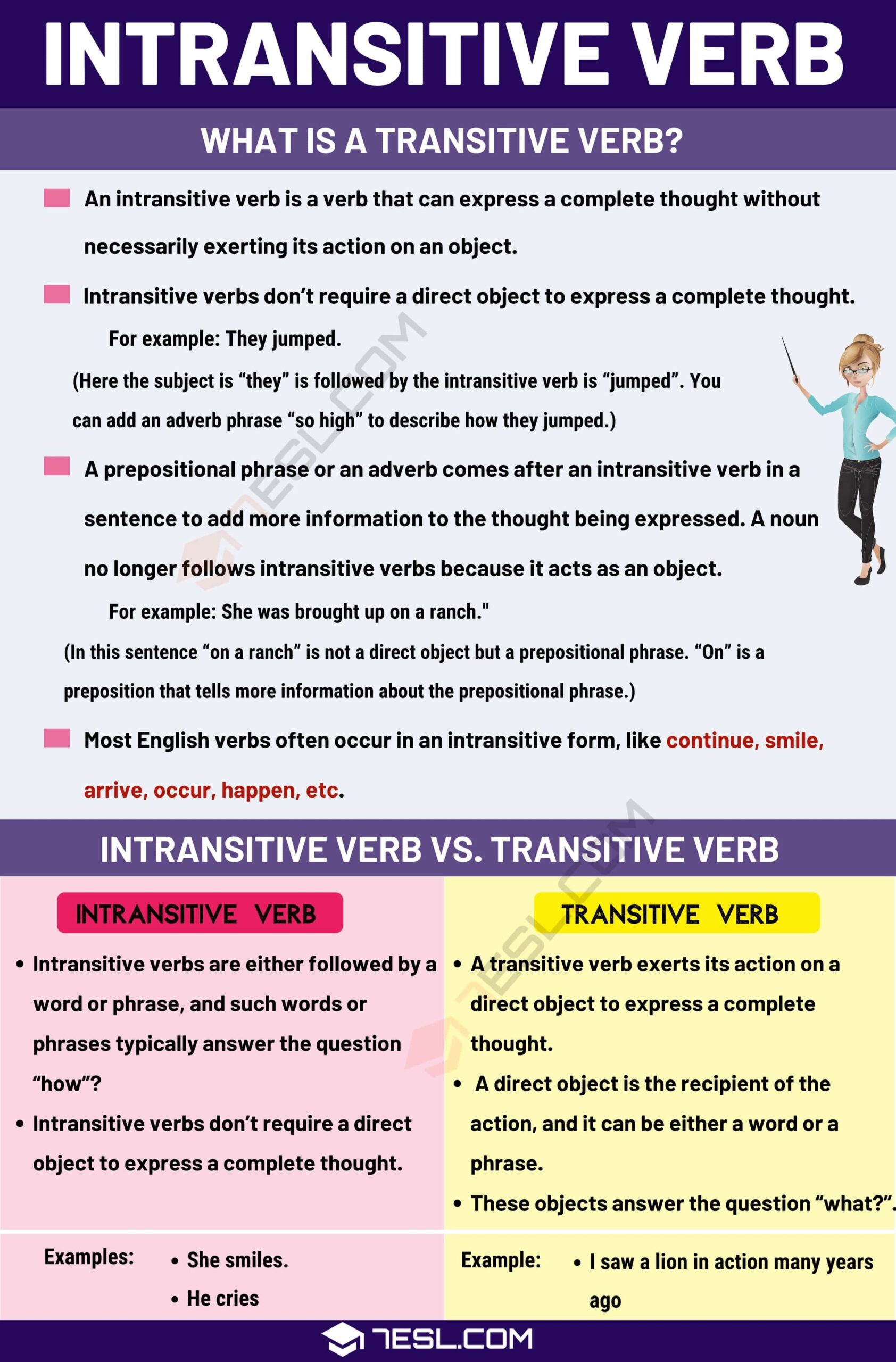Verbs are an essential part of any sentence, as they express actions or states of being. One important distinction to understand is the difference between transitive and intransitive verbs. This difference plays a crucial role in determining the structure and meaning of a sentence.
Transitive verbs require a direct object to complete their meaning, while intransitive verbs do not. Understanding this difference can help clarify the relationships between various elements in a sentence and improve overall clarity and coherence.
Transitive and Intransitive Verbs Meaning
Transitive verbs are action verbs that require a direct object to complete their meaning. The direct object is the recipient of the action performed by the subject of the sentence. For example, in the sentence “She ate an apple,” the verb “ate” is transitive, and “an apple” is the direct object that receives the action of eating.
In contrast, intransitive verbs do not require a direct object to complete their meaning. These verbs express actions or states that do not transfer to an object. For example, in the sentence “He sleeps peacefully,” the verb “sleeps” is intransitive because it does not require a direct object to convey its meaning.
Some verbs can function as both transitive and intransitive, depending on the context. For example, the verb “run” can be transitive when followed by a direct object, as in “She runs a marathon,” or intransitive when used without a direct object, as in “He runs every day.”
It is essential to pay attention to the presence or absence of a direct object when determining whether a verb is transitive or intransitive. This distinction can significantly impact the structure and meaning of a sentence.
Overall, understanding the difference between transitive and intransitive verbs is crucial for constructing clear and coherent sentences. By recognizing whether a verb requires a direct object to complete its meaning, writers can effectively convey their intended message and enhance the overall clarity of their writing.
In conclusion, the distinction between transitive and intransitive verbs is vital for understanding the structure and meaning of sentences. By recognizing the role of direct objects in relation to verbs, writers can create more precise and coherent communication. Mastery of this concept can elevate the quality of writing and improve overall comprehension for readers.
